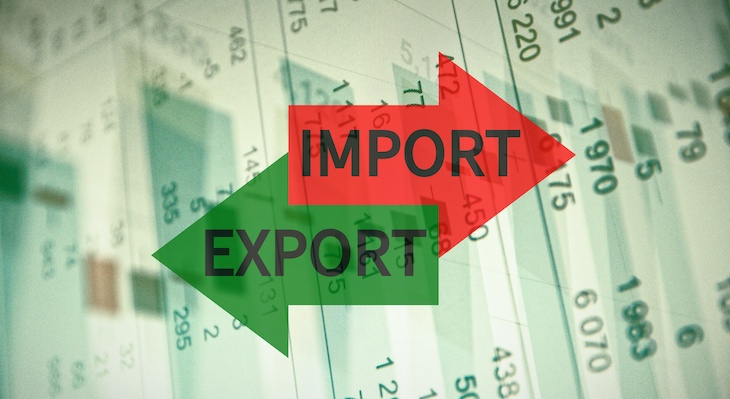Balance of payments (BOP)
The Balance of payments (BOP) is the accounting record of all economic transactions between residents of the country and the rest of the world in a particular time period. These transactions are made by individuals, firms, and the Government.
Hence, the BOP is the record of a country’s exports, imports, foreign direct investments (FDI), remittances, etc.
The two main components of the Balance of payments are current account and capital account.
Current Account
The current account records all transactions related to exports, imports, and unilateral transfers. Therefore, the current account includes:
- Export and Import of goods: Export involves receipt of payment and is a positive entry (credit). Import is a negative entry (debit). Net export of goods is also known as the balance of trade. [If export receipts are greater than import payments, it is known as trade surplus. If export receipts are lesser than import payments, it is known as trade deficit]
- Export and Import of services.
- Unilateral transfers or ‘one-way’ transfers like gifts, donations, remittances. Receipt of unilateral transfers from the rest of the world is shown on the credit side (positive entry) and unilateral transfers to the rest of the world on the debit side.
- Investment income: Investment income is in the form of interest, dividend rent, and profits. Income received is shown on the positive side and paid on the negative side.
[You may read: Current account and Capital account convertibility- Explained]
Update on 7/7/2020: India recorded a current account surplus of 0.1 % of GDP in the 4th quarter of 2019-20 for the first time in 13 years. However, for the full fiscal year 2019-10, the current account was in deficit of 0.9 % of GDP.
The last time we had a current account surplus was in the first quarter of 2006-07. For the full year, the current account was in surplus for three consecutive years from 2001-02 to 2003-04. The surplus in Q4 of 2019-20 can be attributed to these 4 factors–
- On the surface, this surplus looks great, but it reflects economic slowdown in the country due to which imports of non oil, non-precious metals reduced during the year. This led to a lower trade deficit. (payments ↓)
- The net receipts from the export of services increased in March quarter on the back of a rise in net earnings from computer and travel services. (receipts ↑)
- Remittances by Indians employed overseas increased in the quarter. (receipts ↑)
- The net outgo on account of investment income payments decreased from a year ago (payments ↓)
[You may also read: [What is the reason for the economic slowdown in India?]
Capital Account
The capital account records all transactions which cause a change in the assets or liabilities of the residents/ Government. It includes
- Foreign direct investment (FDI): FDI inwards is a positive entry and FDI outwards is a negative entry.
- Foreign institutional investment (FII)
- Borrowings and lendings to and from abroad
- Change in foreign exchange (FOREX) reserves: Increase in FOREX is a negative entry and decrease is a positive entry.
[You may read- Types of Foreign Investment]
The Balance of payment must always be in balance. The deficit in the current account is financed by a surplus in the capital account.
To illustrate- if the current account is in deficit (or the import is more than export), the excess import bill of the country is paid either by borrowing from other countries or selling its assets (FDI/ FII).
If in case, a country is unable to borrow money or attract capital inflows in the form of FDI/ FII, it has to use its foreign exchange reserves.
[You may read- Foreign Exchanges Reserves of India]
Therefore, the BOP deficit (excluding FOREX reserves) is reflected in the decline in FOREX reserves and BOP surplus in the increase in FOREX reserves.
The BOP position of a country is an important indicator of its economic well-being.
In 1991, India had a BOP crisis. We had a huge current account deficit and capital inflows were not adequate to finance the deficit. Even FOREX reserves were not sufficient to pay for the imports.
India had to mortgage gold to the Bank of England and the central bank of Japan to get FOREX to pay for imports.
Economyria is now on Telegram. For a simplified analysis of topics related to economy/ business/ finance, subscribe to Economyria on Telegram
Other posts that you may like:

Why is it that Increase in FOREX is taken as a negative entry and decrease is considered positive entry.
Think of it in purely accounting terms. If we look at the profit and loss account of a firm, profit is a negative entry (debit) and loss is a positive entry. Profit is nothing but an excess of income over expenditure. Hence, expenses + profit = income. (Note: Profit is debited just like expenses; loss is credited like income) In the same way, FOREX reserves can be seen as a balancing figure in the BOP. BOP surplus is the excess of inflows over outflows. This is reflected in the increase in FOREX. Hence, Outflows + FOREX = Inflows
Will you please explain it more clearly and in simple way.
Why BOP follows opposite sign rules as compared to Accounting
Why profit is a negative entry